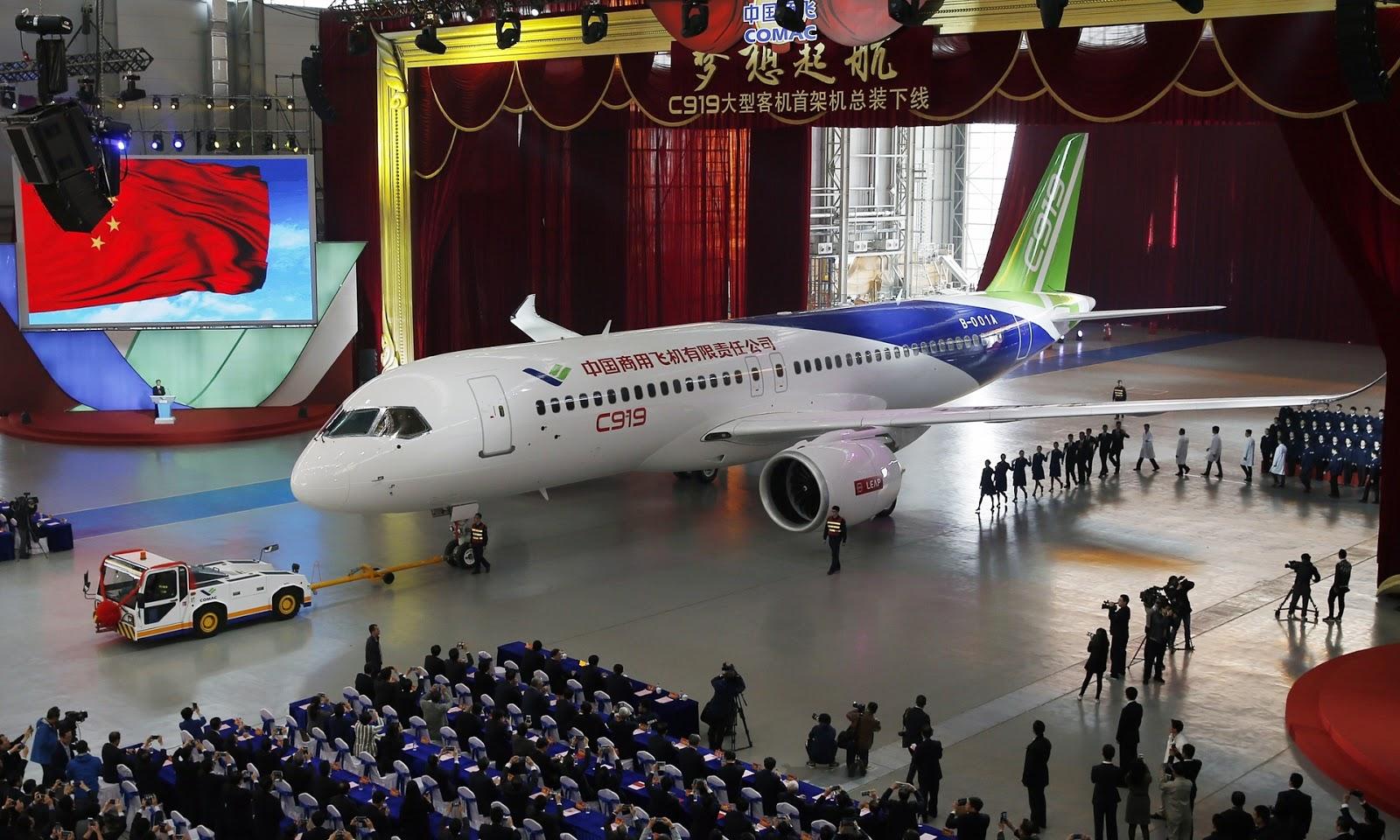China-made narrow-body aircraft may threaten the markets of Boeing, Airbus

Boeing and Airbus may be threatened by Chinese narrow-body aircraft
According to Boeing research, China will require 6,500 new single-aisle aircraft over the next 20 years, while 1,850 new widebody aircraft, including passenger and cargo versions, would be required.
The Commercial Aircraft Corporation of China’s (CACC) narrow-body C919 aircraft received type certification from the Chinese Civil Aviation Administration (CAAC) at the end of September (COMAC).
Shanghai serves as the corporate headquarters for the 2008-founded, state-owned COMAC.
A civil aviation authority’s type certification of an aircraft signifies that the design of the aircraft and each of its parts has been approved. It indicates that the design complies with all applicable noise, airworthiness, fuel venting, and exhaust emission standards. Before an aircraft may go to the sky, this is the last significant test. Given that Airbus and Boeing have long held a monopoly in the aviation industry, COMAC’s certification signals the arrival of a new aircraft manufacturer.
China’s progress

As a state-owned company, like many Chinese airlines, analysts predict that COMAC’s C919 will have little trouble finding a market in China. “The Chinese market for airplanes is quite competitive, similar to India. A pilot who requested anonymity since it is against company policy for him to speak to the media remarked that this creates a natural demand for the COMAC C919 aircraft.
The pilot could be right. To accommodate its growing demand for commercial air travel, Boeing predicted that China will need 8,740 additional aircraft by 2040. China will require approximately 6,500 new single-aisle aircraft over the next 20 years, according to Boeing research, while the widebody fleet, which includes passenger and cargo types, would require 1,850 new aircraft.
According to Ishka Advice, a global provider of aviation data, information, and advisory services, Airbus and Boeing have mostly fought with one another in the mainstream narrow-body market for years. As a result of obtaining CAAC-type certification for the C919, COMAC is now close to competing. “This is a significant milestone for China and, depending on when production certification might be achieved, could evolve into an interesting challenge for the incumbent Original Equipment Manufacturers with their popular “neo” (Airbus narrow-body aircraft) and “MAX” (Boeing narrow-body aircraft) offerings for China, the second-largest market in the world,” the Ishka Advisory notes.
While COMAC offers long-term competition to both Boeing and Airbus, for the time being, it is only present in the China market, according to Satyendra Pandey, Managing Partner, Aviation Advisory firm, AT-TV.
Despite this confidence, several factors make it appear that the Chinese manufacturer’s future may not be as promising. The aircraft will initially need to demonstrate its capabilities during commercial flights. That entails millions of hours of uninterrupted flying, according to Pandey. He continues by mentioning the subject of aircraft liquidity. “It is improbable that there will be buyers for this aircraft other than China given the geopolitical circumstances. It is questionable if the aircraft’s economics will draw carriers to it in that case as well.
A spokeswoman for Airbus responded to a request for comment on the implications of this event for Airbus and Boeing in the worldwide market by saying, “Congratulations to COMAC on receiving type certification of the C919.” Boeing remained silent. Moneycontrol has contacted COMAC for comment about the new aircraft but has not received a response as of yet.
Strongholds of Boeing and Airbus

COMAC isn’t expected to provide Boeing or Airbus with any competition, according to some in the business. An expert notes that the only reason Regional Jet competitors Embraer, Bombardier, Mitsubishi, and Sukhoi are still in business is that they choose not to directly compete with Airbus or Boeing. Even back then, a strategic alliance like Bombardier-Airbus was required to fully leverage Airbus’s marketing support for the (Bombardier) C-series aircraft (since renamed the A220 family).
Similarly, Embraer and Boeing engaged in a liaison to position the latter’s E-Jets to target the 100-130 passenger market immediately below the 737 families utilizing Boeing’s marketing initiatives.
Despite using western engines, the expert predicts that a C919 that directly competes with Airbus or Boeing will not be successful in reaching international markets.
India’s reluctance to bite

Could the C919 provide a third option for Indian airlines wanting to increase their fleet given that India also needs narrow-body aircraft?
According to Nripendra Singh, Global Director, Aerospace and Defence, Frost and Sullivan, the C919 won’t be accepted in the Indian market because of three to four “fundamental determinants,” including the fact that the new aircraft hasn’t yet received certification from any international aviation regulator besides the Chinese.
“For an Indian airline to accept a new kind of aircraft, it is also vital to consider the supply chain issue and maintenance of the new machine if it is grounded. According to him, COMAC does not yet have a ready supply chain for spare parts.
Finding pilots who are qualified to operate the new breed of aircraft is another problem that Indian carriers must deal with.
The cost of the new aircraft is another justification offered by Singh. He points out that COMAC stated the aircraft would cost roughly $50 million when it was first conceptualized, which is less than half of what an airline would spend for an aircraft of a similar kind made by Boeing or Airbus. Singh, citing numerous accounts, claims that the cost of the C919 has since increased to roughly $100 million. According to him, the C919 is now being put together in China with all the necessary components, such as the avionics, and engines, coming from overseas.
Others list other reasons why the C919 will encounter difficulties. According to a senior commander and trainer with an Indian airline, the C919 is unlikely to gain much momentum given that Indian and international carriers are focusing on introducing hybrid-wing technology aircraft.
Major airlines in India and throughout the world are focusing on the use of sustainable aviation fuel and blended-wing design technologies. As the aircraft is based on current designs, the C919 will not assist any Indian or foreign carrier in achieving that goal, the Commander continues.
For worldwide certification, there will be a long wait

It will probably take the Chinese government ten years or more of domestic or regional flying before they can persuade the European Aviation Safety Agency (EASA) or the US Federal Aviation Authority (FAA) about the airworthiness of this aircraft is another reason why the C919 has not found a market in India or elsewhere, according to analysts and pilots, is another reason why the aircraft has not been successful.
Secondly, the issue of whether foreign aircraft lessors, who enjoy the security of long-tested Boeing and Airbus goods, will switch to COMAC. An airline executive who has been involved in discussions for his airline to lease aircraft claimed that “none except Chinese lessors will punt on the C919, even if it were inexpensive, this would prevent its spread to other nations. ” The Indian fleets consist of aircraft that have been leased rather than ones that would have cost millions of dollars to purchase. Over 80% of the fleets of domestic Indian carriers are thought to be leased, compared to the global average of around 53%.




